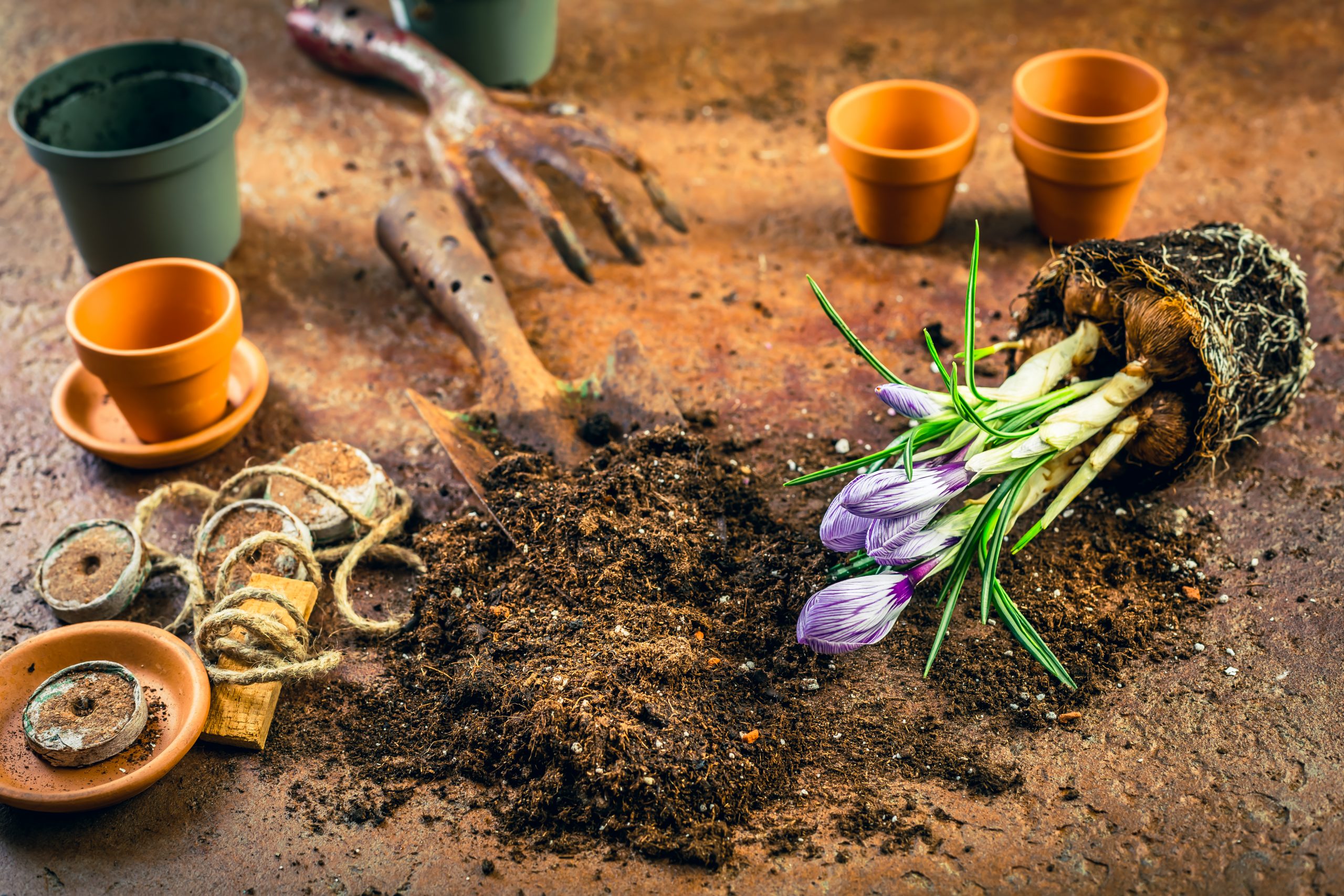Welcome to our cozy corner of the internet, where we chat about all things green and growing in Texas! Native Texas Landscape has been in the business of southeast Texas yards for 20+ years and we love sharing what we’ve learned. Today, we’re diving into some of the nitty-gritty issues that can make or break your beautiful backyard: managing clay soil in Conroe TX, and finding the best solutions for Texas yard soil erosion. Trust us, with a bit of know-how and some elbow grease, you’ll have your outdoor space looking like a slice of paradise in no time.
Manage Clay Soil in Conroe TX
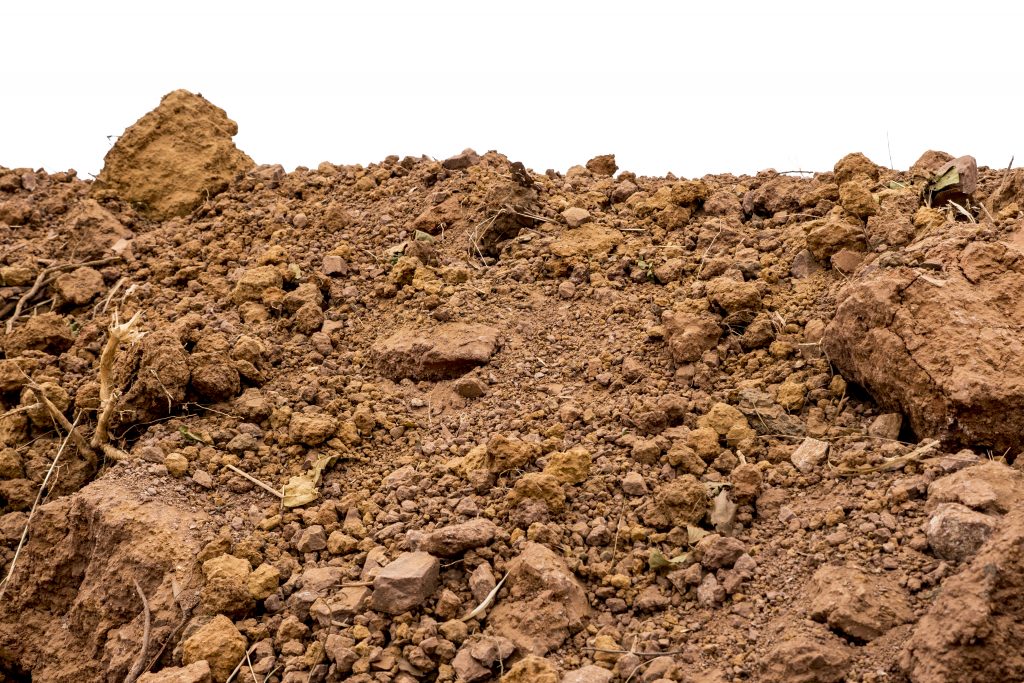
While clay soil might give us a bit of a headache, fear not. Managing clay soil in your Conroe, TX, garden is not as tough as it sounds. Here we offer some advice to transform that tough terrain into a thriving oasis. By using the technique of organic matter and green manure you will have a thriving garden sprouting from your clay soil in no time!
Organic Matter
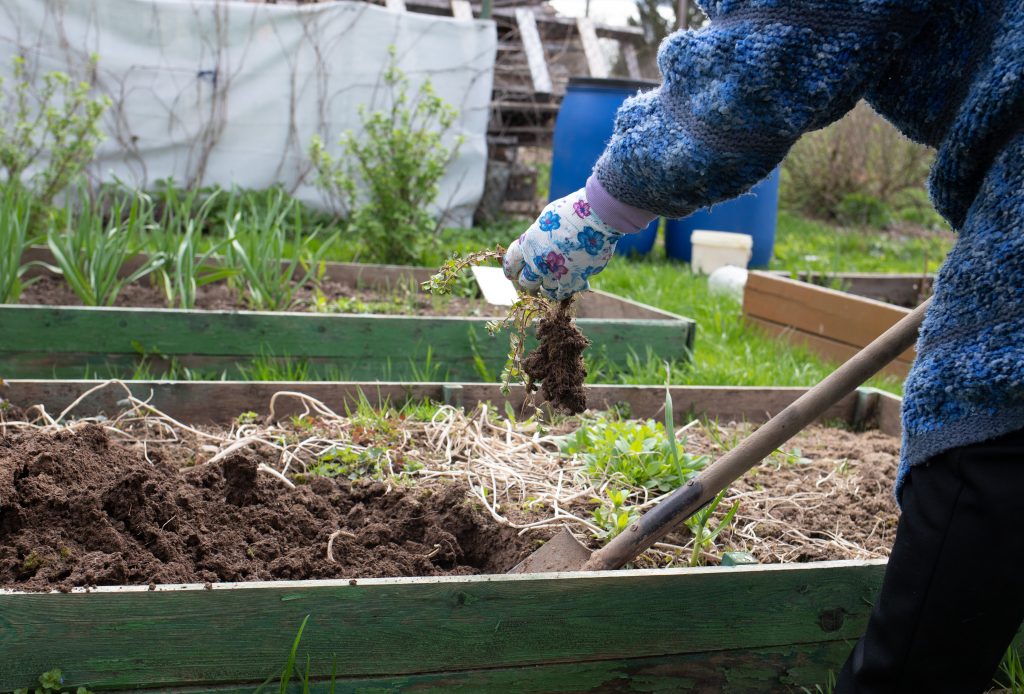
First things first, let’s talk about adding some organic matter. Mixing in compost or aged manure can work wonders. It’s like giving your soil a fluffy pillow, making it easier for roots to spread out and for water to drain more efficiently.
Best Manure for Clay Soil in Conroe TX
Source Matters: The best manure comes from herbivores—think cows, horses, sheep, and chickens. Their manure is rich in nutrients and organic matter, making it fantastic for your garden. However, the age of the manure is crucial; it should be well-rotted or composted before use. Fresh manure can be too strong for plants, potentially burning them, and may carry pathogens.
Benefits: Well-rotted manure improves clay soil structure by increasing its porosity. This enhanced structure allows for better root growth and water drainage, reducing the soil’s tendency to compact.
Compost for Clay Soil and Gardens
Rich Diversity: Look for compost with a mix of ingredients. A good compost should include decomposed plant material (like leaves, grass clippings, and garden waste), fruit and vegetable scraps, and sometimes manure. The diversity of materials ensures a wide range of nutrients for your soil.
Texture and Maturity: Good compost has a dark, crumbly texture and smells earthy. It should be fully decomposed; you shouldn’t be able to identify the original materials. Partially decomposed compost can attract pests and may rob your soil of nitrogen as it continues to break down.
Best Ingredients for Clay Soil
For Manure:
- Cow and Horse Manure: They are less rich in nutrients than poultry manure but are excellent for improving soil structure.
- Poultry Manure: It’s higher in nitrogen, phosphorus, and potassium but should be used sparingly to avoid nutrient overload.
For Compost:
- Leaf Mold: Decayed leaves are fantastic for lightening clay soil, improving both aeration and drainage.
- Wood Chips or Sawdust: In moderation, they can help improve soil structure, but they should be well-composted to avoid nitrogen depletion in the soil.
- Green Waste: Grass clippings and plant trimmings add nutrients and organic matter to the compost, enriching the soil.
Avoid: For both manure and compost, avoid materials that have been treated with herbicides or pesticides, as these can harm your garden plants and soil health.
Green Manure
Next, to manage clay soil in Conroe TX, try green manure. Green manure involves planting cover crops such as clover or vetch. Cover crops aren’t your average plants because they work hard beneath the surface to bring life and structure to your garden’s soil.
Here’s how it works: In the off-season, when your garden is taking a rest, that’s your cue to plant these cover crops. They grow quickly, covering the ground in a lush, green blanket. But their real magic happens when they’re turned back into the soil. As they decompose, they transform into organic matter, a vital ingredient for healthy soil.
This addition of organic matter does wonders: it enriches the soil with nutrients and makes the soil more “fluffy” or aerated. This means your garden’s soil becomes better at holding water and oxygen, making it an ideal home for plant roots. In essence, cover crops like clover and vetch do double duty: they beautify your garden while asleep and improve its foundation for future plantings. Don’t know what native texas plants to grow in your clay soil Conroe TX garden, Native Texas has some suggestions: Native Plants for a Houston Landscape.
For more tips and tricks on managing clay soil in your Texas yard, check out this fabulous resource we found: Gardening with Clay Soil in Texas. It’s packed with advice tailored just for our local soil woes.
Lasagna Gardening to Manage Clay Soil in Conroe TX
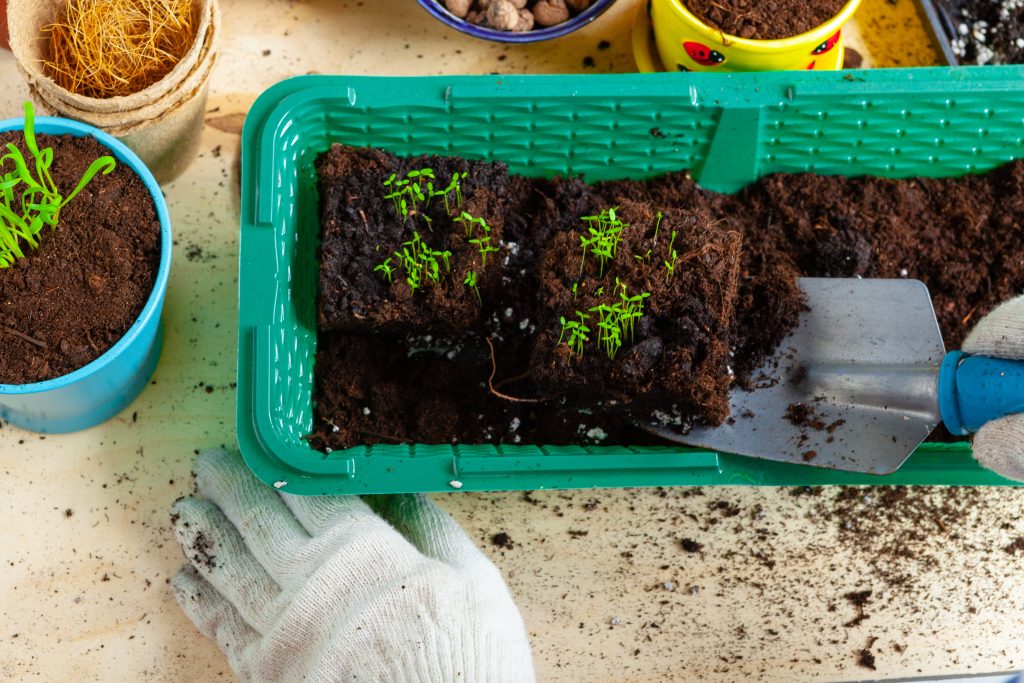
Lasagna gardening is a no-till, easy-peasy method. It layers organic materials right where you want your garden. Think of it as making a veggie lasagna, but for your plants! You start with cardboard or newspaper. This kills the weeds below. Then, you add layers. Think compost, leaves, grass clippings, and manure. These materials break down over time.
This method is fantastic for clay soil because it improves drainage and aeration. Plus, it boosts the soil’s fertility. You don’t even need to dig! Just layer up and let nature do its thing. Over time, the layers decompose. They create a superb growing medium. In conclusion, the technique of lasagne gardening will help your garden flourish by enriching the clay soil.
For more information on Lasagna Gardening check out this article on The Spruce: How to Make a Lasagna Garden.
Solutions for Texas Yard Soil Erosion
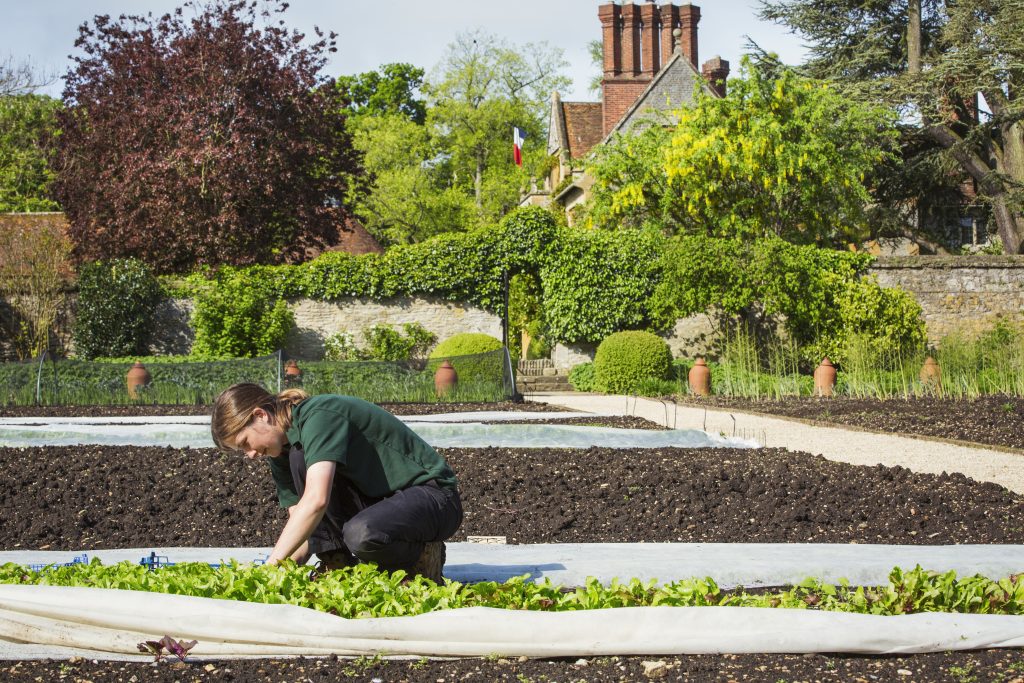
Now, let’s tackle another common challenge: soil erosion. Texas weather can be as unpredictable as a wild mustang, and our yards sometimes bear the brunt of it. But fear not! We’ve got some solid strategies to keep your soil right where it belongs.
Planting Ground Covers
That’s what ground covers protect and beautify your garden. These low-growing, hardy plants spread across the soil, creating a dense mat of foliage. They’re not just about aesthetics; they serve a critical function. By forming a protective barrier over the soil, ground covers prevent erosion, a common problem in gardens with exposed soil.
This erosion prevention is particularly vital during heavy rains when soil is most vulnerable to being washed away. Ground covers like creeping thyme or sedum add texture and color to your landscape, and keeps the soil beneath them healthy and intact. They act like a living mulch, maintaining soil moisture and temperature, and even suppressing weed growth, making your garden maintenance easier and your garden ecosystem more robust.
Building Terraces or Retaining Walls
Now, let’s talk about the architectural heroes of the sloped garden: terraces and retaining walls. If your garden slopes, you’ve likely faced the challenge of soil erosion or difficulty planting on uneven ground. This is where terraces and retaining walls shine. By creating level areas on a slope, terraces provide you with more usable gardening space, allowing for more planting options and easier maintenance.
Retaining walls, on the other hand, are sturdy barriers that hold back soil, creating a clear division and preventing soil from sliding downhill. Constructed from various materials like stone, brick, or timber, these structures not only serve a functional purpose but also add a visually striking element to your landscape. They can be designed to complement your home’s aesthetic, enhancing the overall look of your property. Beyond their beauty, they reduce the speed of water runoff, giving it time to soak into the ground and be utilized by plants, rather than eroding the soil. This not only conserves your soil but also supports a healthier, more vibrant garden ecosystem.
If you’re looking for more detailed solutions to keep your yard from washing away, take a peek at Erosion Control Techniques. It’s a treasure trove of information that can help you protect your landscape from the elements.
Conclusion on Managing Clay Soil in Conroe TX: Solutions for Texas Yard Soil Erosion
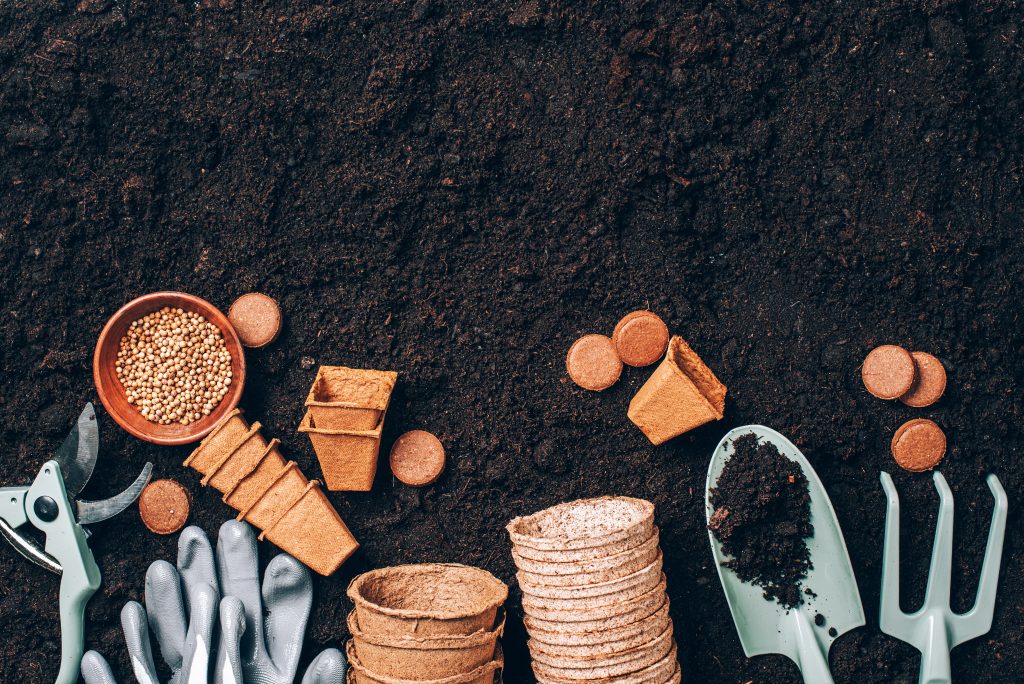
By implementing these strategies, you’ll not only manage clay soil in Conroe, TX and find effective solutions for Texas yard soil erosion, but you’ll also be taking steps toward creating a more sustainable and beautiful outdoor space. Remember, whether you’re doing it yourself or searching for a “landscape design company near me,” the right knowledge and a bit of effort can turn your landscaping dreams into reality. So, go ahead, give your Texas yard the love it deserves, and watch it thank you with blooms, greens, and serene scenes!


